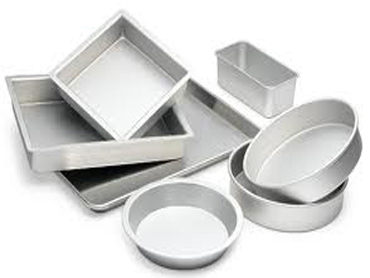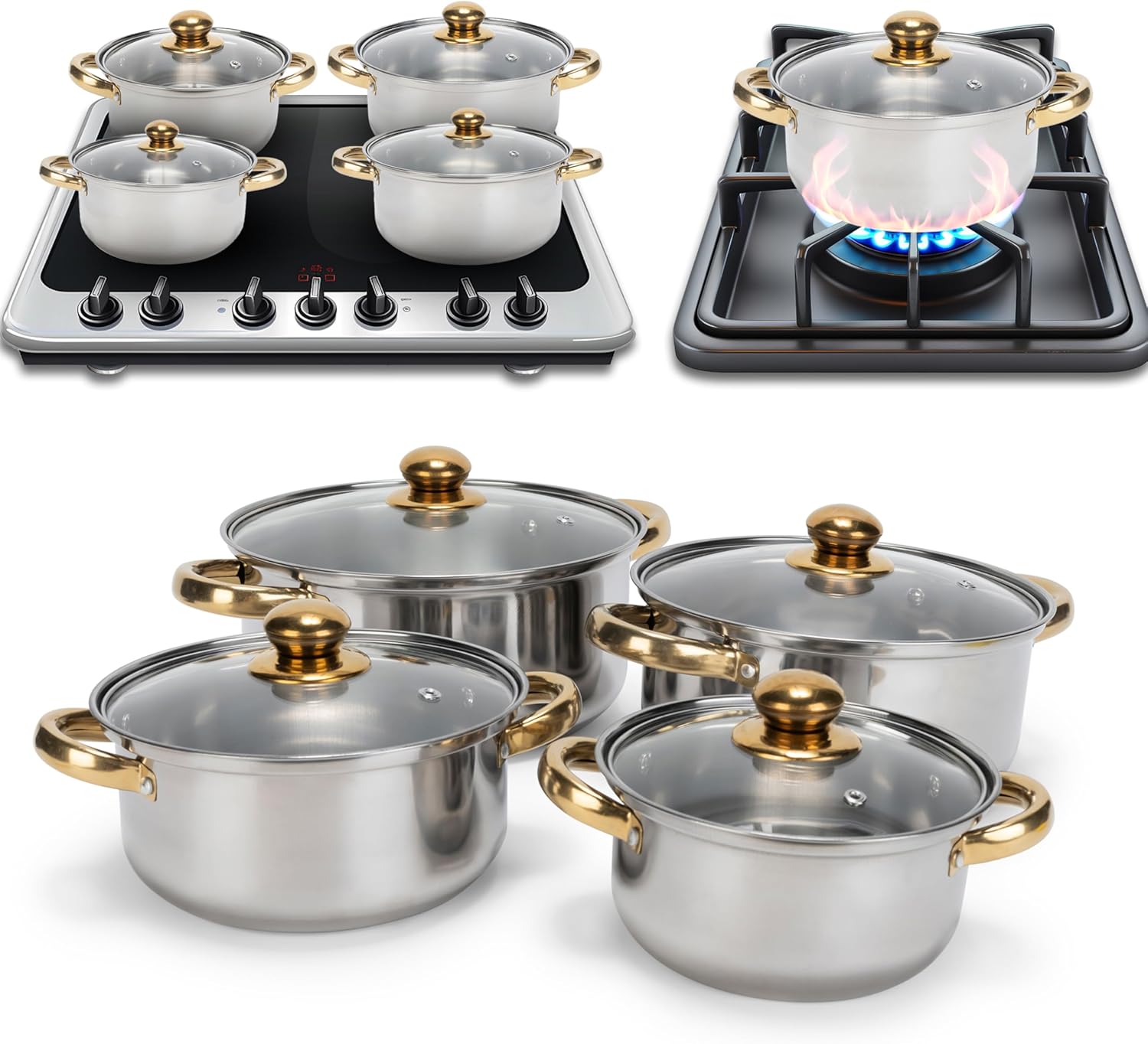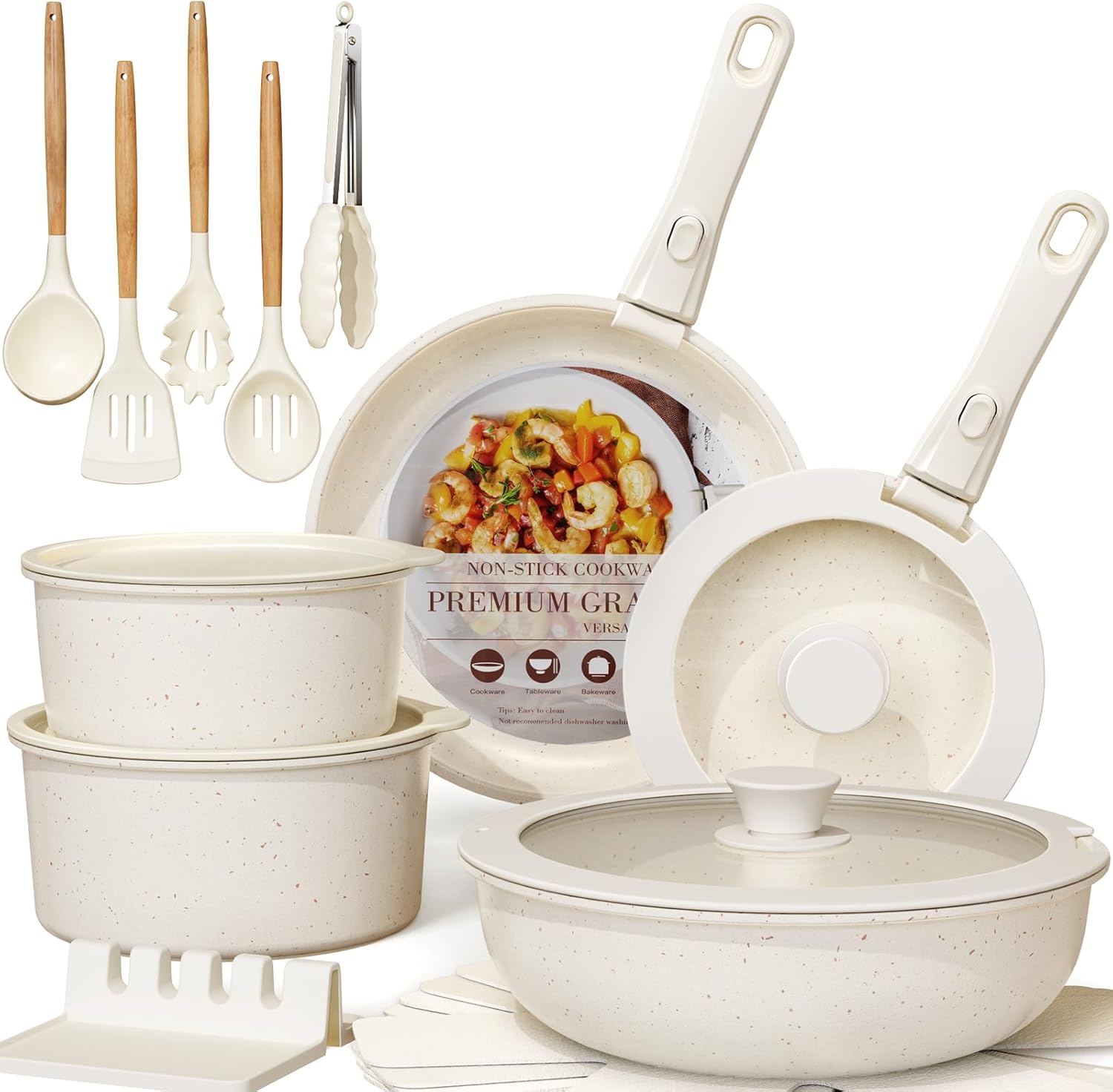To use pans in baking, select the appropriate size and material for your recipe. Prepare pans by greasing or lining them before adding batter.
How to Use Pans in Baking:Baking success often hinges on the correct use of pans, which serve as the foundational tool for cakes, cookies, and breads. Knowing your bakeware’s capabilities allows you to manipulate the final texture and appearance of your baked goods. Picking the right pan starts with matching the dimensions and volume specified in your recipe, ensuring your baked creations rise and cook evenly.
Aluminum, non-stick, silicone, or glass materials each impact the baking time and temperature, requiring adjustments for optimal results. Prepping your pans is just as crucial; whether it’s through greasing, flouring, or parchment paper, this step prevents sticking and contributes to a perfect release after baking. Remember that darker pans typically bake faster, so reducing the oven temperature by 25 degrees can help avoid overbrowning. Embrace these guidelines to master the art of baking with various pans and achieve delicious, visually appealing results every time.

Credit: www.reddit.com
Choosing The Right Pan For Your Baking
Choosing the Right Pan for Your Baking is crucial. The pan you select can affect the taste, texture, and appearance of your baked goods. Let’s explore how to pick the perfect pan for your next baking adventure.
Material Matters: Glass Vs. Metal Vs. Silicone
Different materials heat differently. This affects your baking results.
- Glass pans heat slowly but evenly. They are ideal for pies.
- Metal pans heat and cool quickly. They are great for cookies.
- Silicone pans are flexible and non-stick. They are perfect for muffins.
Choose glass for even baking, metal for browning, and silicone for non-stick.
Size And Shape: Finding The Perfect Match
The size and shape of the pan are key to baking success.
| Pan Type | Use For |
|---|---|
| Round Pans | Cakes, deep-dish pizzas |
| Square Pans | Brownies, bars |
| Loaf Pans | Breads, meatloaf |
| Muffin Tins | Muffins, cupcakes |
Match the pan size and shape to your recipe for the best results.

Credit: www.facebook.com
Preparing Pans For Baking Success
Proper pan preparation is crucial for perfect baked goods. Even baking and easy release depend on it. Follow these steps for best results every time.
Greasing Techniques For Non-stick Results
To ensure your treats don’t stick, use these greasing tips:
- Softened butter or margarine works well.
- Use a paper towel or pastry brush to spread evenly.
- Shortening is a no-fail option.
- For sugar-coated edges, dust with flour or sugar after greasing.
Using Parchment Paper Or Baking Mats
For a mess-free, perfect release, try these:
- Cut parchment paper to fit pan bottoms.
- Silicone baking mats are reusable and versatile.
These liners prevent sticking and make cleanup a breeze.
Temperature Tips For Perfect Baking
Perfect baked goods start with understanding your oven and the pans you use. The color and material of your baking pan can affect cooking times and temperatures. Below are some temperature tips to help ensure your baked creations turn out just right.
Adjusting For Dark Or Light Colored Pans
Pan color impacts how heat is absorbed and distributed. Dark pans absorb more heat. This can lead to overbrowning. Light pans reflect heat, promoting even baking. Adjust oven temperature and baking time based on pan color:
- Dark pans: Reduce oven temperature by 25 degrees.
- Light pans: Use the recipe’s suggested temperature.
Preheating: The Key To Even Baking
Always preheat your oven before baking. A hot start ensures a well-risen, evenly baked product. Here are steps to preheat properly:
- Turn on the oven 10-15 minutes before baking.
- Use an oven thermometer to check the temperature.
- Place pans in the center of the oven for even heat distribution.
Note: For accurate temperatures, calibrate your oven every few months.
Maximizing Even Heat Distribution
Maximizing Even Heat Distribution is key to perfect baking. The right techniques ensure cakes rise evenly and cookies bake uniformly. To achieve this, proper pan placement and rotation are crucial.
Avoiding Hotspots With Proper Pan Placement
Hotspots in ovens can lead to unevenly baked goods. Place pans in the oven’s center for best results. This position avoids direct heat from the top or bottom. Ensure pans don’t touch the oven walls. This prevents heat from concentrating in one area.
- Center pans on the oven rack.
- Keep pans away from oven walls.
- Use oven thermometers to check for hotspots.
Rotating Pans For Uniform Cooking
Halfway through baking, rotate your pans. This helps combat uneven oven temperatures. Turn pans 180 degrees to promote uniform cooking. If baking on multiple racks, swap the pans’ positions too.
- Rotate pans 180 degrees halfway through.
- Swap top and bottom rack positions.
- Check for doneness after rotation.
Timing Adjustments For Different Pans
Achieving perfect baked goods often hinges on how timing in the oven is adjusted. Various pans affect baking times. The pan’s depth and material change how heat circulates. This impacts cooking duration. Bakers need to make smart adjustments for successful outcomes.
Alterations For Depth And Material
Depth and material dictate heat distribution. Thin metal pans heat up fast. They cool down quickly too. Glass and ceramic retain heat longer. They need more time to reach the right temperature.
- Thin Metal: Decrease baking time.
- Dark, Non-stick: Lower oven temperature by 25°F.
- Glass or Ceramic: Add extra baking time.
- Thick or Insulated: Extend baking duration.
Deep pans require more time. Batter in the center takes longer to cook. Adjust your oven to avoid underbaked or overbaked results.
Testing For Doneness: Not Just About Time
Don’t rely solely on the clock. Check visual cues and use tests for doneness.
| Cake | Test |
|---|---|
| Lightly press | Should spring back |
| Insert a toothpick | Comes out clean |
| Edges pull away | Sign of readiness |
For cookies, look for golden edges. Breads should sound hollow when tapped. Remember, each oven is unique. Keep an eye on your bake.
Caring For Your Baking Pans
Caring for Your Baking Pans is key to long-lasting use. Proper maintenance ensures your pans remain in top shape, impacting the quality of your baked goods. Follow these guidelines for cleaning and storing your baking pans.
Cleaning Best Practices
Clean pans right after use to avoid stubborn residues. Here’s how:
- Soak in warm, soapy water to loosen food particles.
- Use a soft sponge to scrub gently. Avoid steel wool to prevent scratches.
- Rinse with clean water and dry thoroughly to prevent rust.
- For tough stains, use a baking soda paste. Apply, let sit for an hour, then wash off.
Storage Solutions To Maintain Shape And Surface
Proper storage protects your pans’ shape and surface. Consider these tips:
- Store pans in a cool, dry place.
- Stack pans with a layer of paper towel between them to prevent scratches.
- Hang pans if possible to avoid warping and maintain shape.
- Use pan protectors or soft cloths for non-stick surfaces.
Troubleshooting Common Baking Pan Issues
Troubleshooting Common Baking Pan Issues can be a game-changer. Perfect baking is not just about recipes. It’s also about the right tools. Let’s fix common pan problems together.
Dealing With Warping
Pans often warp after high heat. This can ruin a good bake. Here are steps to keep pans flat:
- Avoid sudden temperature changes.
- Choose thick, heavy-duty pans.
- Store pans properly.
Warped pans can often be flattened with some weight. Place a heavy object on top when the pan is cool.
Resolving Sticking Cakes And Cookies
Stuck cakes and cookies are no fun. Here are tips to keep them off the pan:
- Always grease your pan or use parchment paper.
- Let baked goods cool before trying to remove them.
- Use a knife to loosen edges for cakes.
For tough cases, a brief freeze can help release the food.
:strip_icc()/baking-pans-522ae1adc00b4d46a14ad7937b236c59.jpg)
Credit: www.bhg.com
Innovative Uses For Traditional Baking Pans
Think your baking pans are just for sweets? Think again! Let’s dive into some unexpected, but delightful ways to use traditional baking pans. With a bit of creativity, these tools can transform the way you cook and present your favorite dishes.
Beyond Desserts: Savory Dishes
Who says baking pans are only for brownies and cakes? Grab your muffin tin or bundt pan, and let’s get savory. Here are some ideas:
- Mini Meatloaves: Use a muffin tin for perfect portions.
- Vegetable Tarts: Round cake pans make great tart shells.
- Frittatas: Whip up a quick egg dish in a brownie pan.
Creative Molding And Shaping Techniques
Your baking pans can also become molds for stunning presentations. Check out these tips:
- Rice Molds: Shape sides in a cupcake pan for fun plating.
- Chocolate Bowls: Use the bottom of muffin tins to mold them.
- Potato Stacks: Layer slices in muffin cups for crisp edges.
Traditional pans serve many purposes. They’re not just for baking cookies or cupcakes. Experiment with savory recipes or try new shaping techniques. Your pans are versatile tools waiting for your imagination.
Frequently Asked Questions
How Do You Bake In A Pan?
Preheat your oven as per the recipe’s instructions. Grease your pan to prevent sticking. Pour batter or mixture into the pan evenly. Place the pan in the oven, and bake for the recommended time. Check for doneness before removing from the oven.
How Do You Prepare Pans For Baking?
To prepare pans for baking, start by coating them with butter or oil. Then, dust with flour to cover all surfaces, tapping out excess. For certain recipes, lining the pan with parchment paper is also recommended to ensure easy removal of baked goods.
Do You Have To Grease A Non-stick Pan For Baking?
Greasing a non-stick pan for baking isn’t necessary due to its coating, but a light butter or oil layer can aid in flavor and browning.
How Do You Choose A Pan When Baking?
Select a pan based on recipe requirements. Choose non-stick for easy release, and heavy-gauge materials for even heat distribution. Consider size and shape for the intended result, and always check for oven-safe ratings.
Conclusion
Baking success hinges on pan choice. Mastering this ensures delectable treats every time. Embrace these tips for flawless creations. Ready to elevate your baking game? Let’s get those pans prepped and witness the magic unfold in your oven!





Leave a Reply